Ukraine
Photos
31 Photos
Per Page:
Filter Categories
All
Filters
Cape Kazantyp is a prominent headland on the Kerch Peninsula, which defines the southern shore of the Sea of Azov and the east extension of the Crimean Peninsula. Due to its relatively low latitude (45° N) the Crimea has been the warm holidaying destination for generations of Ukrainians and Russians. Towns in the Kazantyp area-Lenine, Shcholkine-offer tourist attractions ranging from birdwatching to beaches and music festivals.
This detailed astronaut photograph was taken from the International Space Station when it was located 400 km (250 mi) to the northeast, but due to the long (800 mm) lens used, the photo includes detailed field patterns and city blocks. Green and brown fields show intensive agricultural activity in the area, and salt ponds are visible at the west end of the shallow Lake Aktashskoye at image center. The distance from the tip of the Cape to the largest local city, Lenine is only 20 km (12 mi).
Shcholkine is a new town built in 1978 to house workers of the planned Crimean nuclear power plant. The partially completed plant was inspected following the Chernobyl disaster of 1986 and found to be located on a site prone to earthquakes. Further construction was terminated, and the construction equipment and already built structures were abandoned in place. Today, Shcholkine is an increasingly popular tourist destination. Image courtesy of NASA.
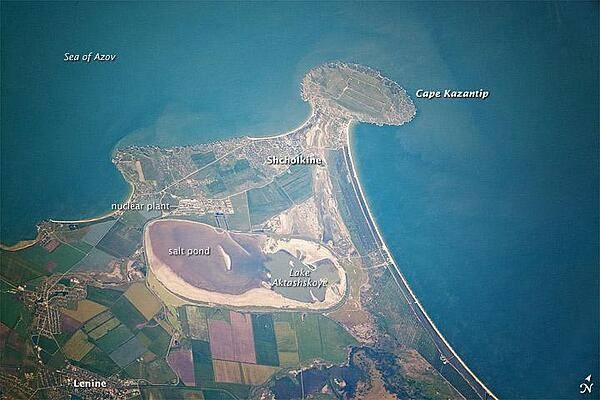
From mainland Ukraine, the Crimean Peninsula extends southward, bordered on the west by the Black Sea and on the east by the Sea of Azov. Stretching across the peninsula is a network of shallow, marshy inlets sprawling over roughly 2,600 sq km (1,000 sq mi). This network of lagoons is known as Syvash (also Sivash or Sivas). During the summer months, the warmed marsh waters give off unpleasant odors, lending the region the nicknames of "Rotten Sea" or "Putrid Sea."
This natural-color satellite image shows the shallow waters and varied chemical composition of the Syvash lagoons contribute to their unearthly colors of peach, mustard, lime green, blue, blue-green, beige, and brown. Thick layers of silt coat the bottoms of the shallow marshes, which are rich enough in mineral salts to supply a local chemical plant.
Surrounding the marshy areas are mostly agricultural fields. Urbanized areas appear along the shores of the Black Sea, and highways curve and zigzag across the peninsula. Outside of the marshes, the land in this area is generally a level plain of arid steppe. In colder months, frosts alternate with thaws, and fogs are frequent. Photo courtesy of NASA.
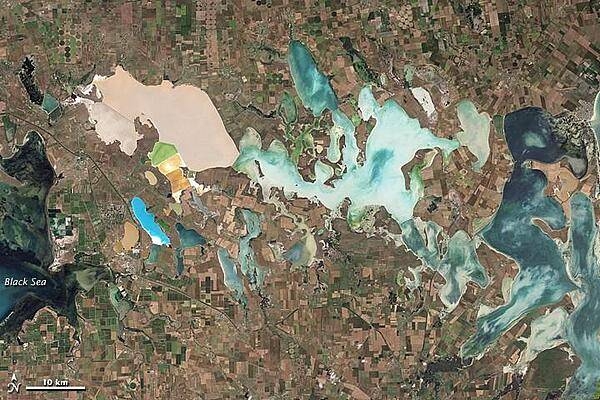
Kyiv is one of the oldest cities in Eastern Europe and may date back as far as the 5th century A.D. The Golden Gate in Kyiv was reconstructed in 1982 on the site of the city's medieval southern gate. The structure was one of three originally built in 1037 as part of the city's massive fortifications.
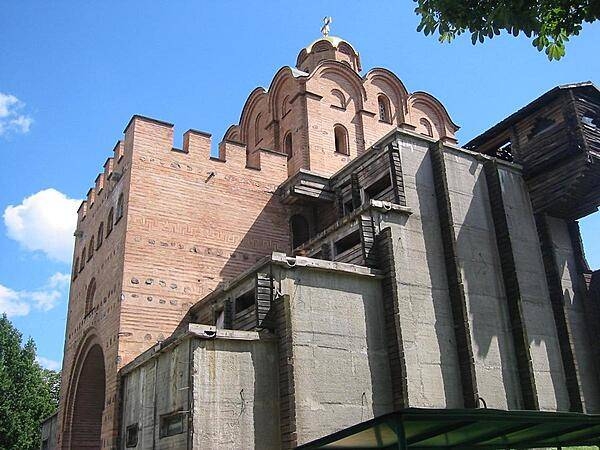
The Neo-Renaissance National Opera House of Ukraine in Kyiv, constructed between 1898 and 1901, boasts one of the largest stages in Europe. Its opera company has acquired an international reputation.
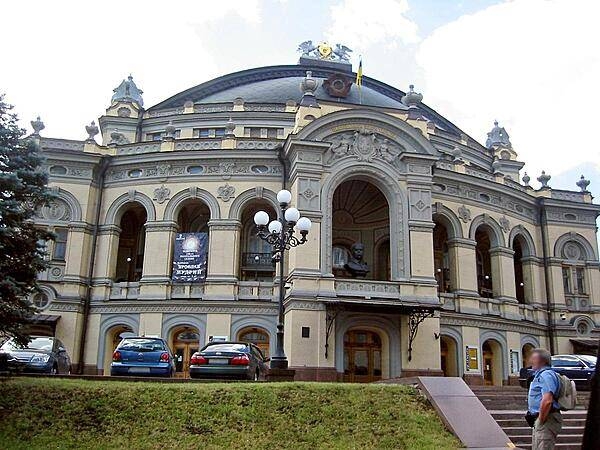
The National Opera House of Ukraine in Kyiv is named after Taras Shevchenko, Ukraine's most famous poet and artist. His bust sits in an alcove over the entranceway.

A view of Maidan Nezalezhnosty (Independence Square) in the center of Kyiv. The huge plaza has been the site of many political protests, the most famous being the Orange Revolution of 2004. During holidays the square is the scene of parades and open air concerts.
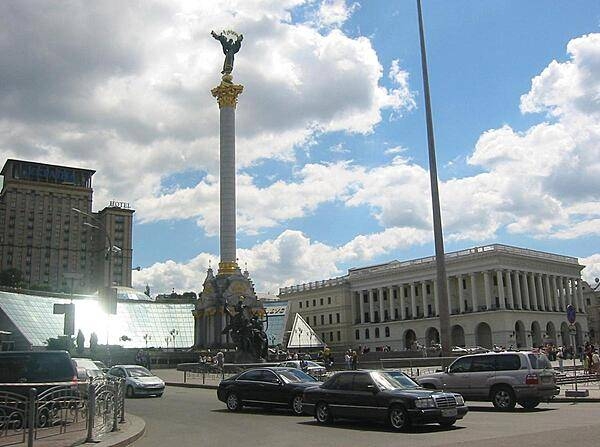
Saint Sophia Cathedral in Kyiv was completed in 1037 during the reign of Yaroslav the Wise. The ruler was buried in the church in 1054 in a six-ton marble sarcophagus that still survives. Although the cathedral's exterior was remodeled into the Ukrainian Baroque style in the 17th century, its original Byzantine interior was preserved. It was the first Ukrainian monument to be inscribed onto the World Heritage List.
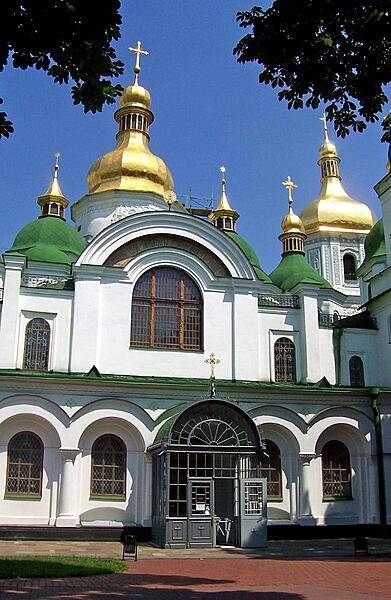
The Verkhovna Rada (Supreme Council) building in Kyiv is home to Ukraine's 450-member parliament.
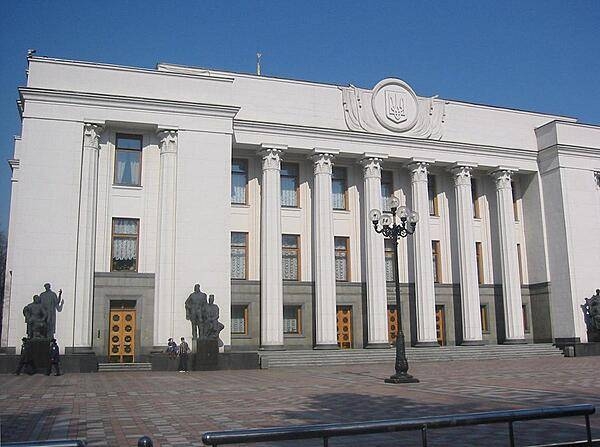
The Baroque Saint Andrew's Church in the Podil neighborhood of Kyiv was designed by the famous architect Bartolomeo Rastrelli and constructed between 1747 and 1754. It is reputed to stand on the site where in the first century A.D. Saint Andrew planted a cross and prophesied that a great Christian city would one day rise.
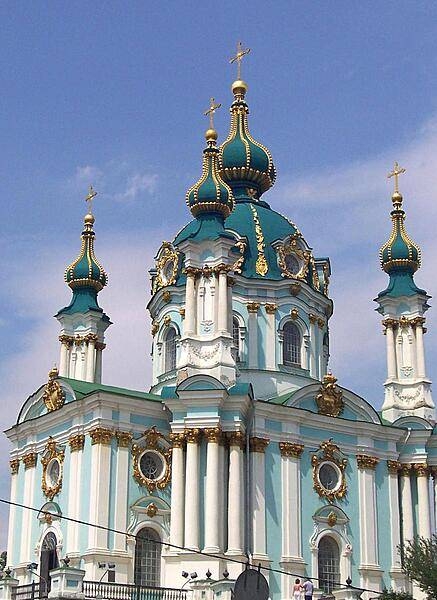
The Troitska Nadbrama Tserkva (Gate Church of the Trinity) sits atop the main entrance to the historic Kyiv Pechersk Lavra (Kyiv Monastery of the Caves) complex. First constructed in 1106-1108, it was destroyed during the Mongol invasion of 1240, but subsequently reconstructed a number of times. It is now decorated in the Ukrainian Baroque style.
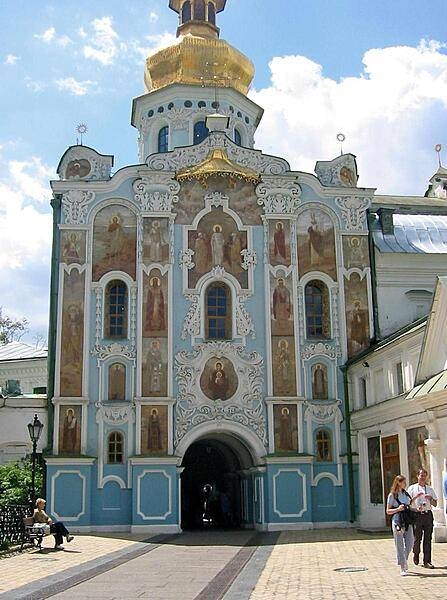
Part of the historic Kyiv Pechersk Lavra (Kyiv Monastery of the Caves) complex. Since its founding as a rock-hewn cave monastery in 1015, the site has been a preeminent center of Orthodox Christianity in Eastern Europe.

Golden-topped domes at the Kyiv Pechersk Lavra (Kyiv Monastery of the Caves). This monastery complex is one of the largest in Ukraine with over 20 churches and more than 1,000 meters of caves.
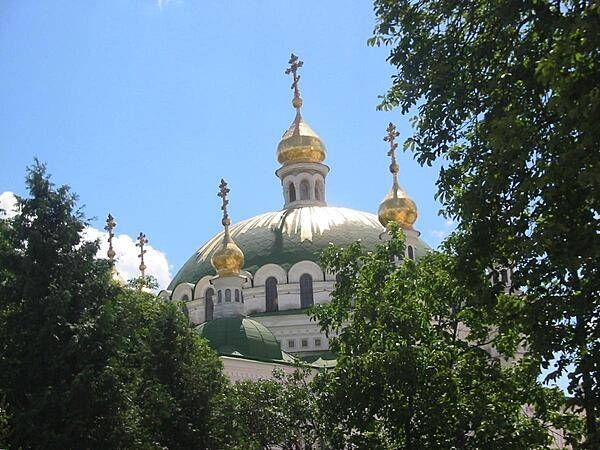
Page 01 of 03